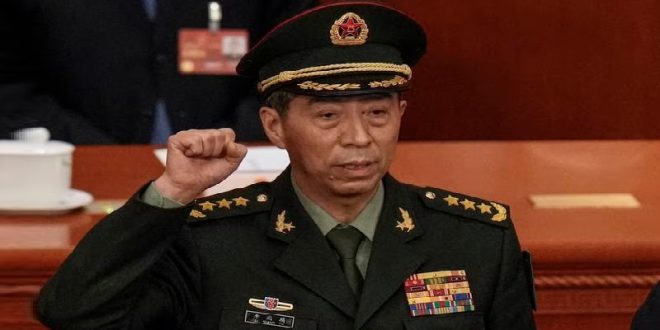28-04-2023
Bureau Report + Agencies
NEW DELHI: Chinese Defence Minister Li Shangfu has arrived in India to attend a key security summit meeting amid strained ties between the countries.
Li will attend the Shanghai Cooperation Organization (SCO) defence ministers’ meeting on Friday in the Indian capital Delhi.
 This is the first visit to India by a Chinese defence minister since a deadly clash between their troops in 2020.
This is the first visit to India by a Chinese defence minister since a deadly clash between their troops in 2020.
At least 20 Indian and four Chinese soldiers were killed.
The sides have had other confrontations since then, with the most recent flare-up happening in December at Tawang in the north-eastern state of Arunachal Pradesh.
The root cause of the tensions is an ill-defined 3,440km (2,100-mile)-long disputed border in the high-altitude Himalayan region. Rivers, lakes and snowcaps along the frontier mean the line can shift, bringing soldiers face to face at many points.
China’s defence ministry said on Tuesday that Li will address the conference in Delhi and “meet with the heads of delegations from relevant countries to communicate and exchange views on the issues of international and regional situation as well as defence and security cooperation”.
Li and Indian Defence Minister Rajnath Singh will also hold a bilateral meeting in Delhi.
The minister’s visit comes days after India and China concluded the 18th round of military talks to try to resolve the border dispute.
 India became the chair of the SCO in 2023. The organization was formed by China, Russia and four Central Asian countries in 2001 as a countermeasure to limit the influence of Western alliance’s such as Nato. India and Pakistan joined the group in 2017.
India became the chair of the SCO in 2023. The organization was formed by China, Russia and four Central Asian countries in 2001 as a countermeasure to limit the influence of Western alliance’s such as Nato. India and Pakistan joined the group in 2017.
Russia’s Defence Minister Sergei Shoigu will also attend the meeting in Delhi, while Pakistan’s Khawaja Asif is expected to join virtually.
Next week, Pakistan’s Foreign Minister Bilawal Bhutto Zardari will attend an SCO foreign ministers’ meeting in India, the first visit by a top Pakistani government official to India in years.
High in the Himalayas, the holy town of Tawang is one of the most intractable issues in the border dispute between India and China and a potential flashpoint for future conflict.
Along snow-capped ridges to its north, soldiers from Asia’s two biggest armies face off, sometimes just a few hundred metres apart.
Last December, they clashed in what some experts saw as a worrying sign of how things could escalate.
Tawang, a pilgrimage site for Tibetan Buddhists perched some 3,000m (10,000ft) above sea level, is home to India’s largest Buddhist monastery.
 For this reason and because of its strategic location, it’s long been the focus of tensions between the nuclear-armed neighbors.
For this reason and because of its strategic location, it’s long been the focus of tensions between the nuclear-armed neighbors.
The town is claimed by China. Tibet, annexed by China in 1950, lies just 35km (22 miles) to the north.
The Himalayan nation of Bhutan is nestled between two Asian giants, China and India but that unique geographical position also comes with a price.
Bhutan is one of the two countries with which China is yet to resolve its land border dispute. The other country is India, which has a long-running disagreement over its Himalayan frontier with China.
China’s global rise is putting pressure on Bhutan to reach a deal with Beijing, but any possible breakthrough will need the approval of its ally India.
Thimphu and Delhi share a close relationship and India has been offering hundreds of millions of dollars of economic and military aid to Thimphu. (Int’l News Desk)
 Pressmediaofindia
Pressmediaofindia




